Ancient Roman military camp discovered over 7,000 feet in the air that was a lookout point during battle
A 2,000-year-old Roman military camp has been discovered at an unusual altitude in the Swiss Alps.
Archaeologists discovered the site at a shocking 2,200 meters in the air, located in the Colm la Runga corridor on the border of Switzerland and northern Italy.
Artifacts such as arrowheads, Catapults and other military equipment were also found in the camp.
The ancient Roman military camp was discovered in the Swiss Alps, 7,000 feet above sea level
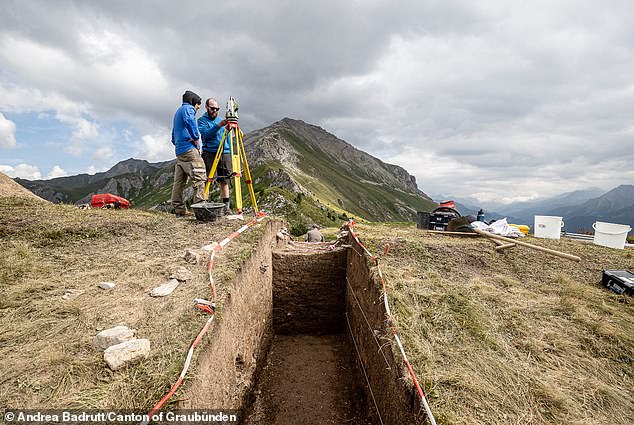
Researchers discovered three ditches and a defensive wall at the site, giving the soldiers a 360-degree view of their surroundings.
Warriors must have passed through the mountain pass to gain a vantage point overlooking a known Roman battlefield, located 900 metres below the camp.
The military campsite was discovered last year when a volunteer detectorist surveyed the area and discovered a terrain structure, which turned out to be a defensive wall.
Researchers at the University of Basel in Switzerland used Light Detection and Ranging (LiDAR), a technique that uses lasers to measure height differences in the ground and create three-dimensional models of the terrain.
The data showed that the camp was fortified by three moats and a defensive wall on the top of the mountain, which offered a panoramic view of four valleys: Landwassertal, Albulatal, Domleschg and Surses.
This location gave Roman soldiers stationed in the camp an advantage in keeping an eye on armies crossing the Lenzerheide Pass, the most common route taken by soldiers through the Alps.
The team said the discovery was “internationally exceptional” as it allowed them to trace the precise advance of Roman forces 2,000 years ago.
According to the researchers, the camp was in a “strategically advantageous location”, and they said the “sensational discovery” is most likely related to the war that broke out on the battlefield less than 2,000 years ago.
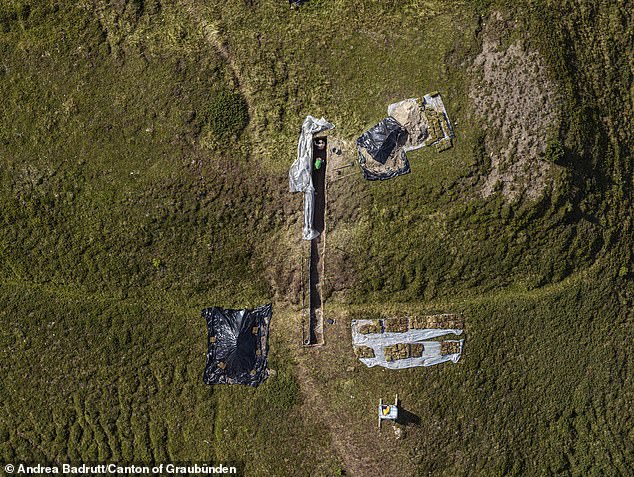
The military site was discovered by a volunteer detectorist who was surveying the area at the time. There are three ditches and a defensive wall
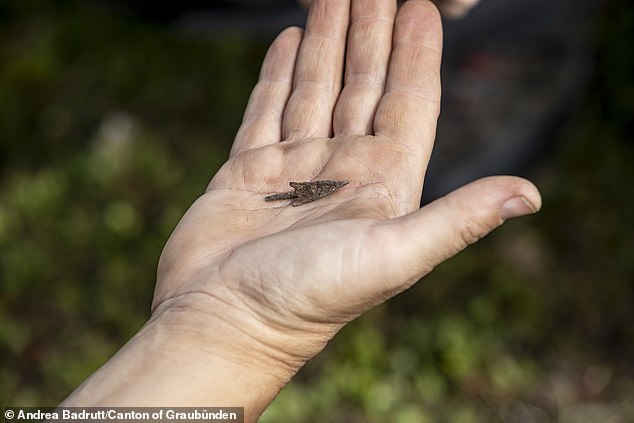
The archaeologists found an arrowhead at the site (pictured) that connects the military camp to a battlefield nearly 3,000 feet below
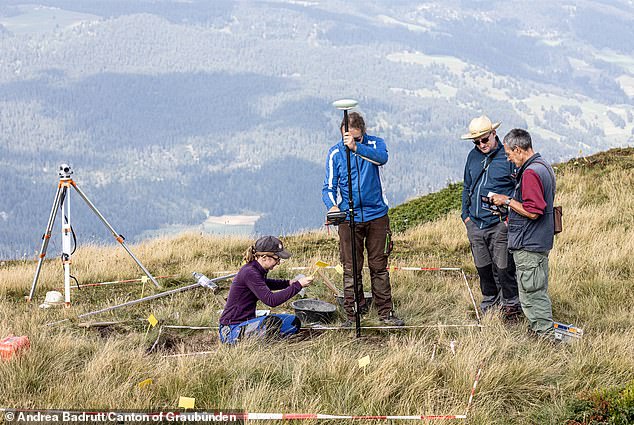
The team discovered the site last year and has since found artifacts, including military equipment and catapults, that connect the camp site to an ancient battlefield below.
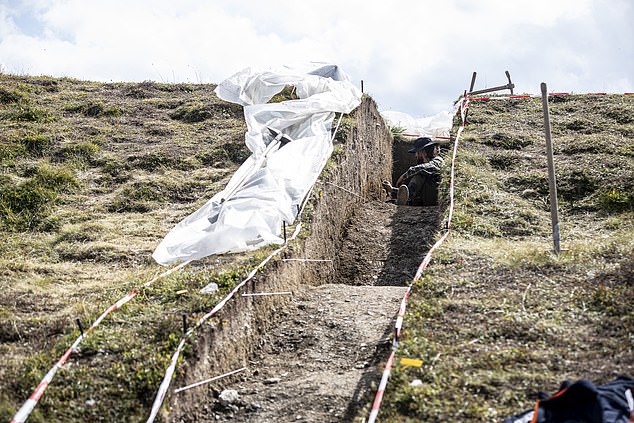
Researchers believe the elevation of the site gave soldiers an unobstructed view of the area, allowing them to see approaching troops.
Since 2021, researchers have been studying the battlefield where a Roman conflict took place between the people of Cunter and Tiefencastel at the Crap Ses gorge in Graubünden.
It has been identified as the very first Roman battlefield in Switzerland. Researchers suspect that an army of 2,000 soldiers from the Third, Tenth and Twelfth Roman Legions fought on the hilltop against 500 to 1,000 people from the Suanetes tribe.
Researchers believe that the war between the two groups was part of the Roman Empire’s attempts to dominate the region. The discovery of the military camp and its artifacts show that there is a clear link to the battlefield.
Over the past year, the team has discovered a number of artefacts in the camp, including weapons and equipment belonging to Roman soldiers.
The finds also included slings bearing the stamp of the Third Legion of the Imperial Roman army involved in the battle.
“The sensational discovery of a Roman military camp in Graubünden once again underlines that archaeological research in ‘Roman Switzerland’ still produces wonderful surprises,” the researchers said.
